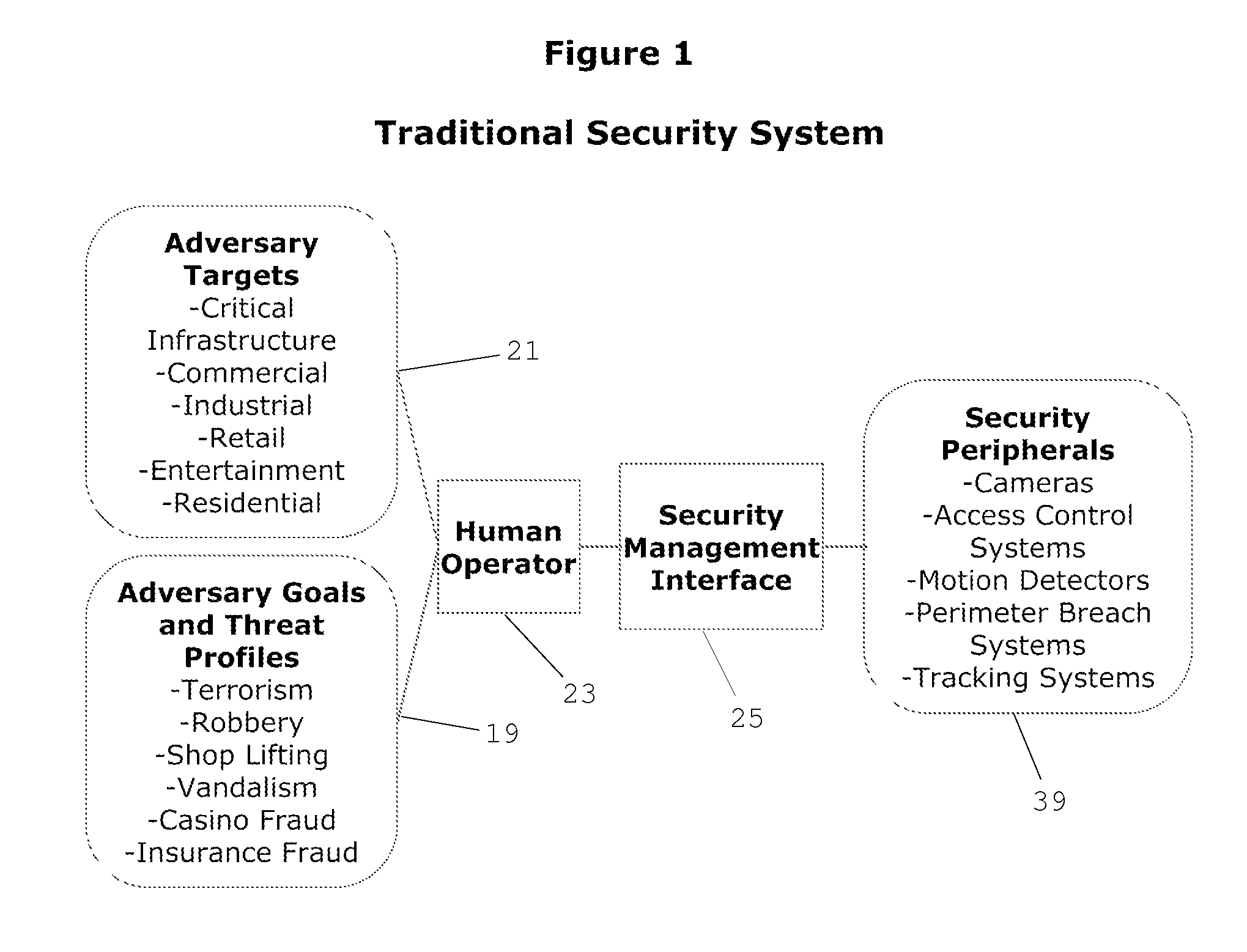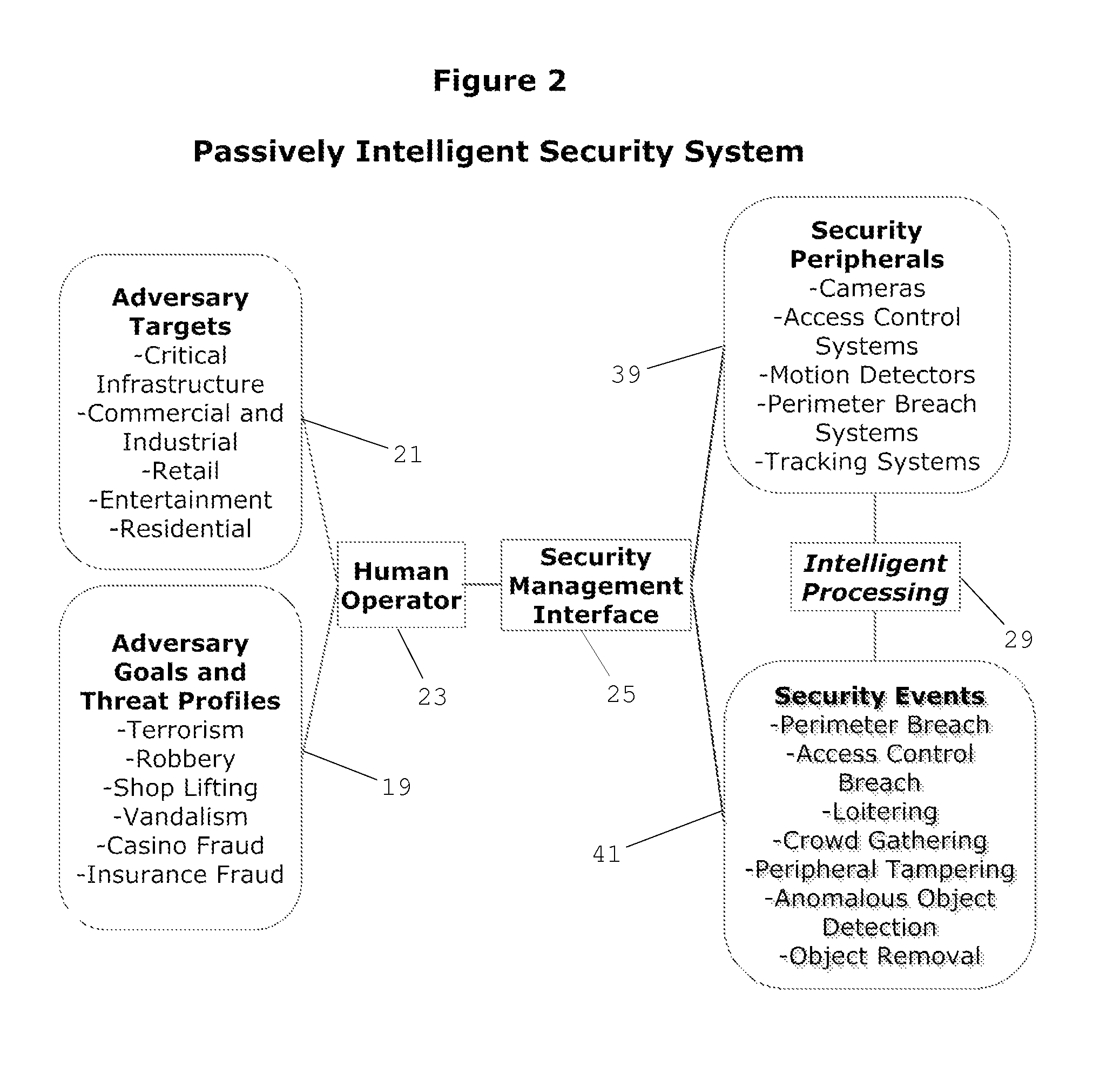Cognitive security system and method
a security system and cognitive technology, applied in the field of security systems, can solve problems such as security breaches associated with adversary goals in dynamic security environments, and achieve the effects of reducing “fear”, minimizing “suspicion”, and maximizing “curiosity”
- Summary
- Abstract
- Description
- Claims
- Application Information
AI Technical Summary
Benefits of technology
Problems solved by technology
Method used
Image
Examples
Embodiment Construction
[0033]To provide an overall understanding, certain illustrative embodiments will be described; however, it will be understood by one skilled in the art, inference process algebra and symbolic cognitive architecture mathematics that the system and method described can be adapted and modified to provide systems for other suitable applications and that additions and modifications can be made without departing from the scope of the system and method described herein.
[0034]FIG. 1 and FIG. 2 represent prior art associated with typical security systems that are highly dependent upon the skill of a human operator 23 to predict and react to security breaches associated with adversary goals and threat profiles 19 directed against adversary targets 21 in a dynamic security environment 15.
[0035]FIG. 3 is a block diagram of a cognitive security system for predicting and detecting real time security breaches in dynamic environments in accordance with an embodiment of the present invention. The pr...
PUM
 Login to View More
Login to View More Abstract
Description
Claims
Application Information
 Login to View More
Login to View More - R&D
- Intellectual Property
- Life Sciences
- Materials
- Tech Scout
- Unparalleled Data Quality
- Higher Quality Content
- 60% Fewer Hallucinations
Browse by: Latest US Patents, China's latest patents, Technical Efficacy Thesaurus, Application Domain, Technology Topic, Popular Technical Reports.
© 2025 PatSnap. All rights reserved.Legal|Privacy policy|Modern Slavery Act Transparency Statement|Sitemap|About US| Contact US: help@patsnap.com



